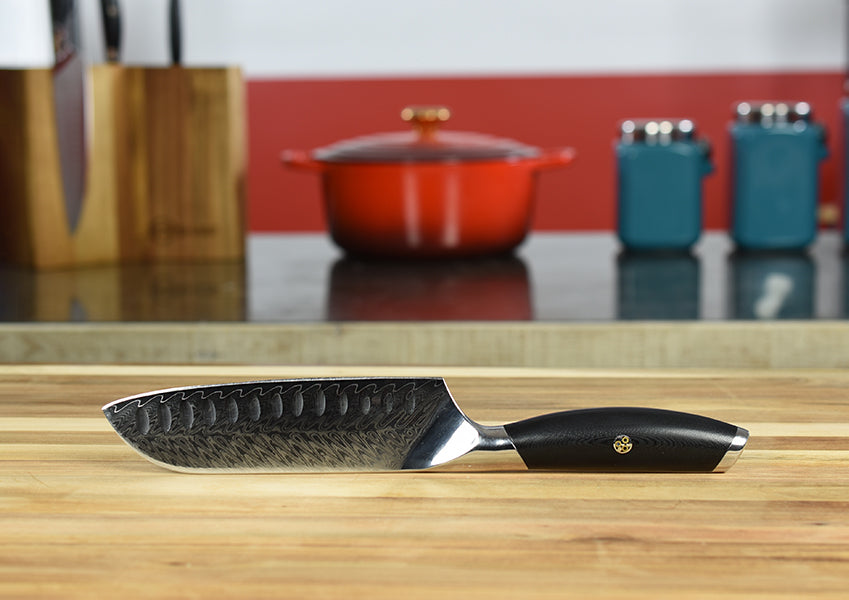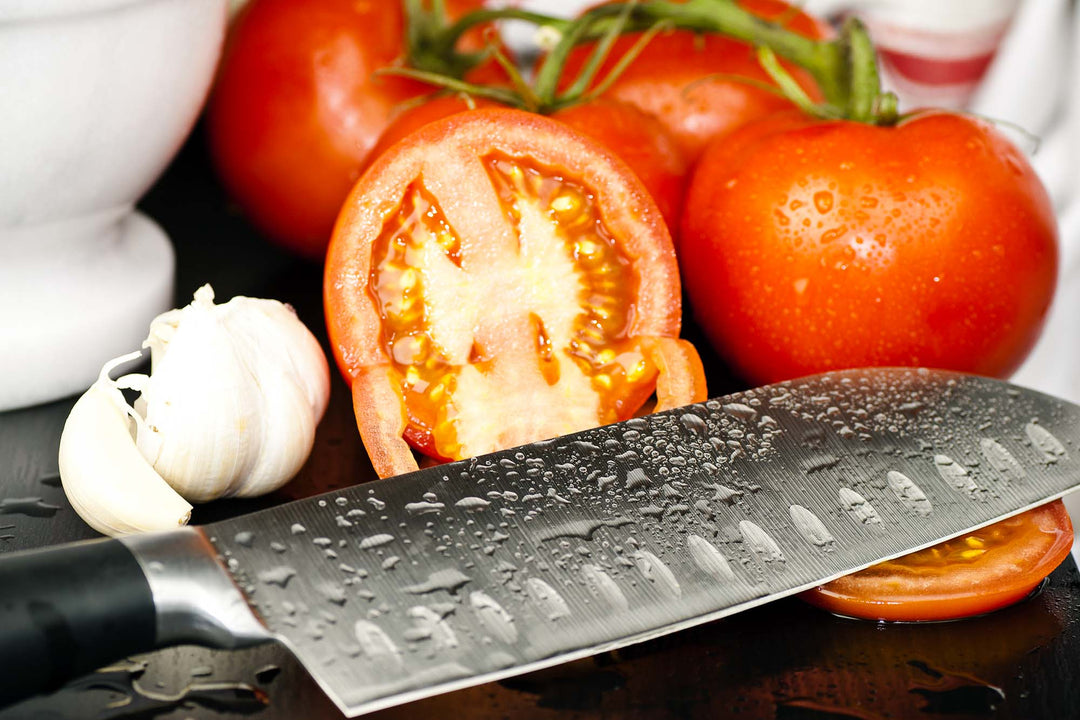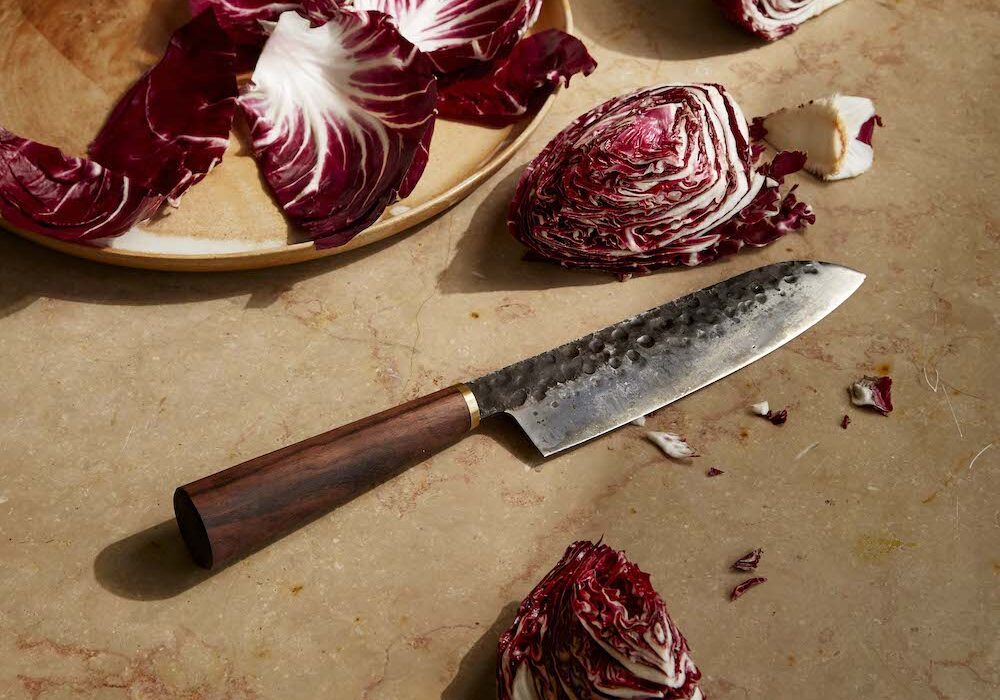Santoku knives are versatile and incredibly useful tools in the kitchen. If youre a kitchen professional or an enthusiastic home cook, mastering the usage of a Santoku knife can elevate your culinary skills to new heights. The purpose of this article is to delve deeply into how to use a Santoku knife effectively, ensuring you maximize its potential.

Introduction to Santoku Knives
The Santoku knife originated in Japan and is now a favorite among chefs worldwide. In Japanese, Santoku means three virtues, referring to its prowess in chopping, slicing, and dicing. Its design is tailored to tackle a variety of kitchen tasks effectively.
Key Features of a Santoku Knife
Understanding the key features of a Santoku knife will help you utilize it more efficiently:
- Blade Length: Typically, between 5 to 7 inches.
- Edge: Usually, a straight edge with a slight curve.
- Blade Shape: The blade often has a sheeps foot tip.
- Material: Often made from high-carbon stainless steel or ceramic.

Why Choose a Santoku Knife?
Unlike other knives, a Santoku knife offers precision and versatility. Its lighter and more balanced, making it ideal for intricate work. Its flat edge makes it perfect for creating thin, uniform slices of vegetables, fruits, and even proteins.
The Benefits of Using a Santoku Knife
- Precision: Ideal for detailed work due to its size and balance.
- Versatility: Suitable for a range of kitchen tasks from chopping veggies to slicing fish.
- Weight: Light and easy to handle, reducing hand fatigue during prolonged use.

Steps to Use a Santoku Knife Correctly
To use a Santoku knife effectively, its essential to follow certain steps and techniques:
1. Proper Grip
Holding your knife correctly is crucial. Grip the handle firmly, but not too tightly, and ensure your index finger and thumb are on opposite sides of the blade for control.
2. The Right Cutting Technique
Unlike a Western chefs knife that relies on a rocking motion, a Santoku knife is best used with a downward and forward motion. This technique is effective for precise and clean cuts.
3. Keep Your Knife Sharp
A sharp knife is essential for efficiency and safety. Ensure your Santoku knife is adequately sharpened. Learn more about knife sharpening methods here.
4. Use a Suitable Cutting Surface
Always use a wooden or plastic cutting board to preserve your knifes edge. Avoid glass or marble surfaces as they can quickly dull the blade.

Common Mistakes to Avoid
Even experienced chefs can make errors when using a Santoku knife. Here are some common mistakes to avoid:
- Wrong Grip: Holding the knife far from the blade reduces control and precision.
- Improper Cutting Technique: Using a rocking motion instead of a forward and down motion undermines the effectiveness of the Santoku knife.
- Neglecting Blade Maintenance: Failing to keep the knife sharp reduces its efficiency and increases the risk of accidents.
Special Techniques for Using a Santoku Knife
Master these techniques to excel in using your Santoku knife:
The Fine Slice
This technique is essential for creating thin slices of vegetables or herbs. Holding the knife at an angle and using a swift, downward motion ensures paper-thin cuts.
The Forward Chop
For cutting larger items like potatoes or squash, the forward chop technique is ideal. Move the knife forward and press down firmly to achieve clean cuts.
The Push Cut
This technique is suitable for slicing delicate proteins such as fish. Hold the knife at a shallow angle and push forward gently.
Maintaining Your Santoku Knife
Proper maintenance extends the lifespan and performance of your Santoku knife:
Regular Cleaning
After each use, wash your knife with warm soapy water and dry it immediately to prevent rusting.
Sharpening and Honing
Regularly hone your knife to keep the edge straight. Sharpen it occasionally using a sharpening stone or an electric sharpener. For detailed instructions on how to sharpen a chef’s knife, visit this guide.
Proper Storage
Store your Santoku knife in a magnetic knife strip or a knife block to protect the blades edge.
Frequently Asked Questions
What makes a Santoku knife different from a chef’s knife?
Santoku knives are generally lighter and smaller than chefs knives, with a flat edge that makes them ideal for fine slicing.
Can I use a Santoku knife for meat?
Yes, Santoku knives can be used for meat, especially for slicing thin cuts. For larger, tougher cuts, a heavier knife might be more suitable.
How often should I sharpen my Santoku knife?
This depends on usage. For daily use, sharpening every few months should suffice. Regular honing will also maintain the blades sharpness.
For more knife-related tips, check out how to use a chef knife here.
And to explore more about Slovenian knives, visit Serbian Chef Knife.
As an Amazon Associate, I earn from qualifying purchases.
As an Amazon Associate, I earn from qualifying purchases.


